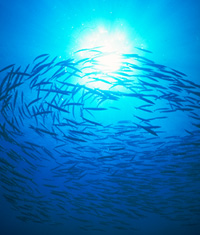Click on image for full size
Correl photography
NASA Heads Out to Sea...
News story originally written on July 30, 1997
NASA is going to launch SeaWifs on the SeaStar spacecraft August 1, 1997. SeaWifs stands for Sea-viewing Wide Field-of-View Sensor. This satellite is part of NASA's Mission to Planet Earth program, which studies the Earth from space.
SeaWifs will monitor plant growth in the ocean. It is thought that plant growth in the ocean affects the climate around the world. SeaWifs will help scientists test this theory.
From the satellite's view, vegetation (mainly phytoplankton) can be mapped by tracking the ocean's color. Phytoplankton are very small plants found in the ocean.
SeaWifs will also provide NASA with data that will help develop fishing maps so that people will know approximately how many fish will be caught in upcoming years.
The Orbital Sciences Corporation's SeaStar spacecraft is to be launched from Vandenberg Air Force Base, California, aboard a Pegasus expendable launch vehicle.
You might also be interested in:
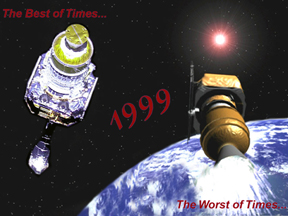
It was another exciting and frustrating year for the space science program. It seemed that every step forward led to one backwards. Either way, NASA led the way to a great century of discovery. Unfortunately,
...more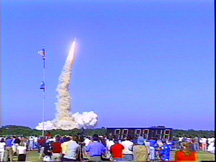
The Space Shuttle Discovery lifted off from Kennedy Space Center on October 29th at 2:19 p.m. EST. The weather was great as Discovery took 8 1/2 minutes to reach orbit. This was the United States' 123rd
...more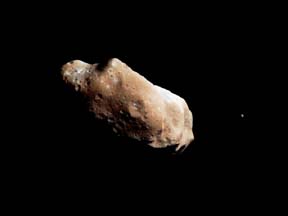
A moon was discovered orbiting the asteroid, Eugenia. This is only the second time in history that a satellite has been seen circling an asteroid. A special mirror allowed scientists to find the moon
...more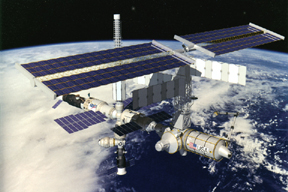
Will Russia ever put the service module for the International Space Station in space? NASA officials want an answer from the Russian government. The necessary service module is currently waiting to be
...more
A coronal mass ejection (CME) happened on the Sun early last month. The material that was thrown out from this explosion passed the ACE spacecraft. The SWICS instrument on ACE has produced a new and very
...more
J.S. Maini of the Canadian Forest Service called forests the "heart and lungs of the world." This is because forests filter air and water pollution, absorb carbon dioxide, release oxygen, and maintain
...more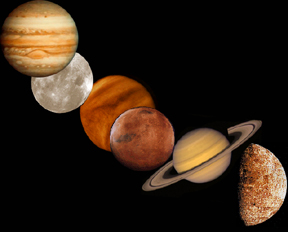
In late April through mid-May 2002, all five naked-eye planets are visible at the same time in the night sky! This is includes Mercury which is generally very hard to see. You won't want to miss this!
...more


